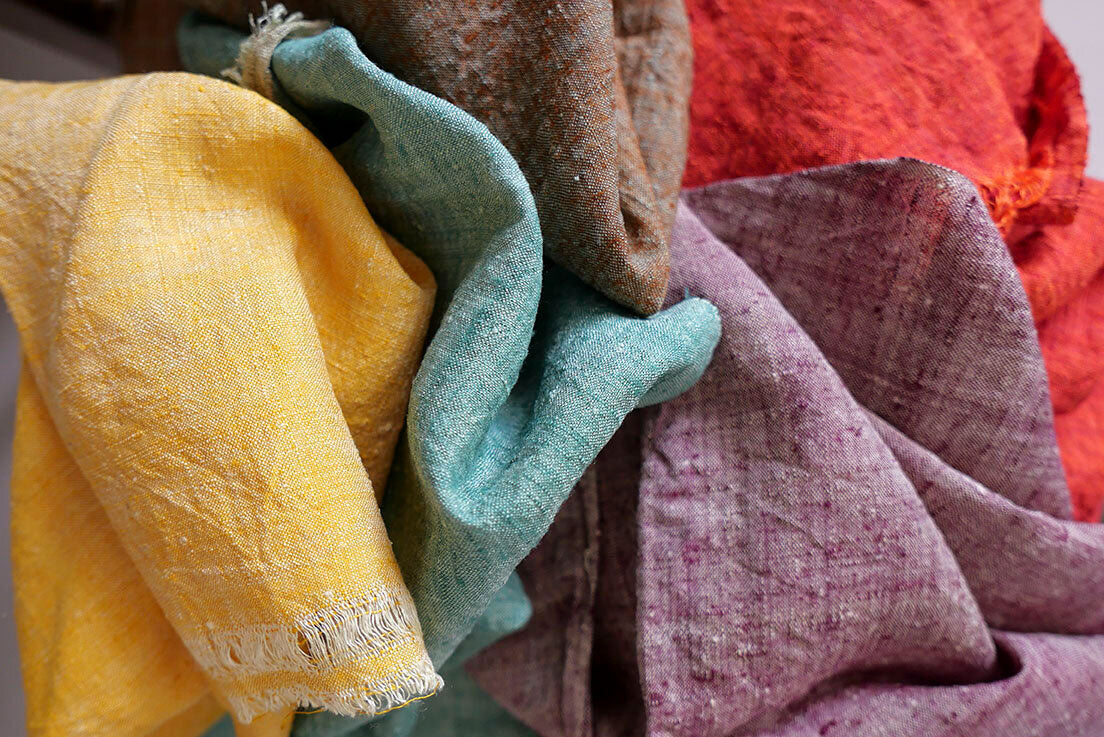
Raw Silk & Wild Silk
19 July 2021There are many beneficial properties of silk. An incredibly strong and durable natural fibre which is soft and hypoallergenic. Silk is also breathable and moisture wicking, making it a natural temperature regulator.
Silk can be classified as domestic or wild. Domestic silk production is controlled so the quality of the cocoons and the subsequent yarns are uniform and regulated. In the wild, silkworm construct cocoons naturally variated in colour and texture, depending on their diet. The term Raw Silk refers to silk that is untreated and still contains the natural protein Sericin, which can make the silk stronger but give it a more uneven texture.
Here we outline the characteristics of our favourite 3 silks;
Matka Silk
Matka silk is a raw silk, made from the cocoons of the domestic Bombyx Mori silkworm, commonly known as the mulberry worm, which feed exclusively on the leaves of the Mulberry tree. But whereas Mulberry silk is made from the longer, more uniform filaments that make up the cocoon, Matka silk is made from the shorter fibres that are left. These fibres are collected and stored in a clay pot called a Matka, before being spun into yarns. The sericin gum is left on the fibres to help maintain strength, creating a thicker yarn with a more uneven rustic texture.
Weaving with these yarns produces a thicker weave of silk which has a coarse slubby texture that resembles linen or tweed. While being soft, lightweight and drapey, Matka silk is also strong and easy to sew making it a versatile fabric popular for dresses, sarees and suits. The Irregularities in the texture enhance the unique character of the hand-spun and hand loomed fabric.

Matka Silk is incredibly drapey with a slubby texture.
Tussah Silk
Tussah silk is harvested from the cocoons of wild silkworms. Tussah moths are from the genus Antheraea. These feed on leaves from oak trees and jamun trees, which are rich in tannin, and which give tussah silk its indicative golden hue. The silkworms spin an uneven filament in various shades of cream, gold, and brown, and the short length of the fibres mean that the finished tussah has a distinctively course structure and crisp handle. Tussah yarns are hand-loomed into a lightweight and fine silk, with a slightly rough texture.

Tussah Silk has a golden hue and a course texture.
Munga Silk
Munga silk is produced in Assam. The Munga larvae derives from a semi-cultivated silkworm, ‘Antheraea assamensis,’, which feed on aromatic Som and Sualu leaves. The yarns produced by these worms are distinguished by their golden/yellowish hue and smooth, lustrous sheen. When woven, Munga silk is known for being soft and smooth while also being incredibly strong and durable.

Munga Silk with a soft sheen and smooth texture